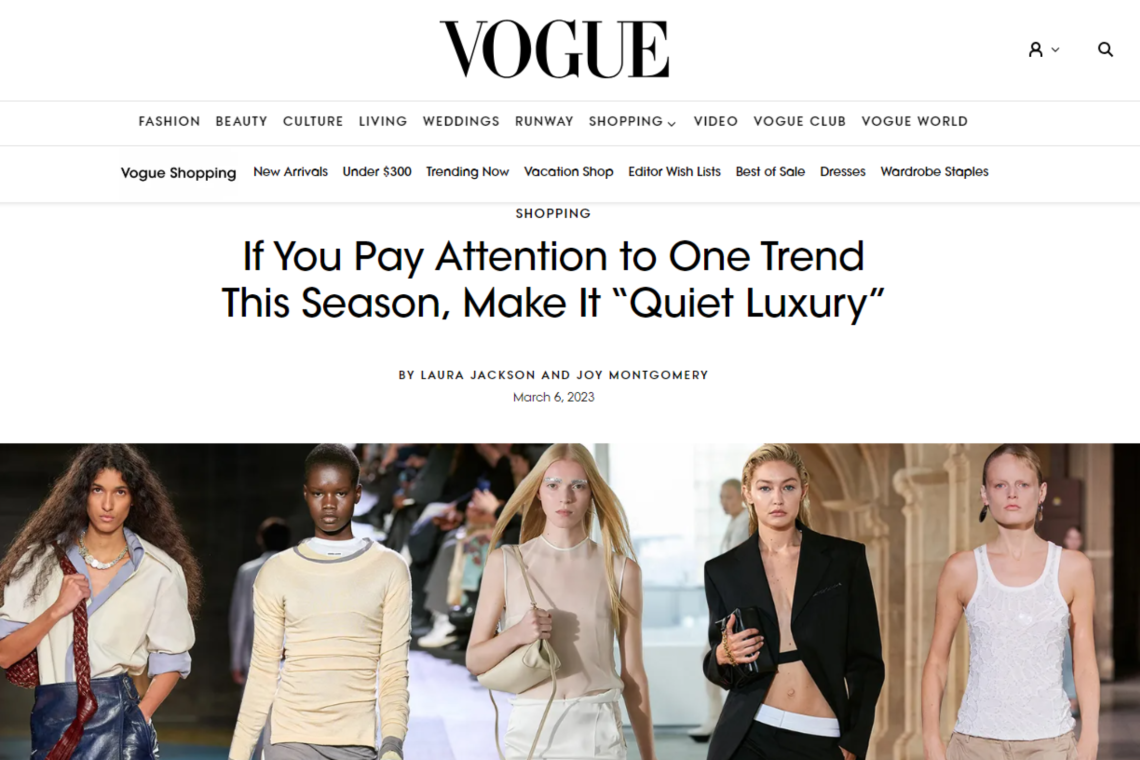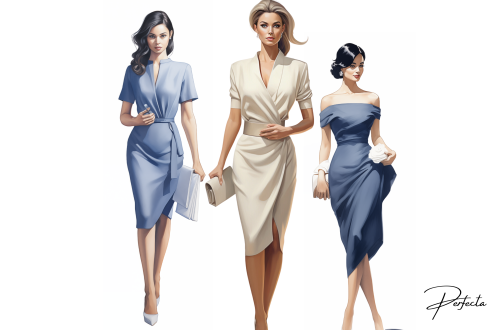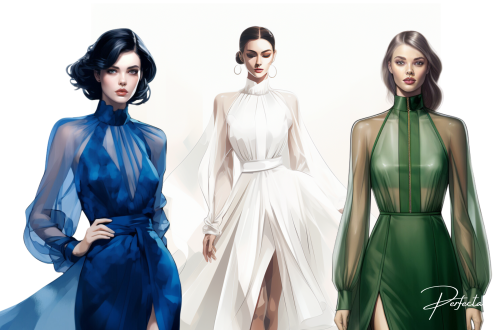
Quiet Luxury: The Art of Discreet Opulence
Quiet luxury in fashion refers to a trend focused on understated elegance and refined simplicity rather than overt displays of wealth or logos. It emphasizes high-quality materials, impeccable craftsmanship, and timeless design, often favoring minimalist aesthetics over flashy embellishments. This trend appeals to those who appreciate subtle sophistication and value craftsmanship and authenticity over conspicuous branding.
Here are some key aspects of the quiet luxury trend:
Quality over Quantity: Quiet luxury emphasizes investing in fewer, but higher-quality pieces built to last. This means opting for garments made from premium materials such as fine wool, silk, cashmere, or leather.
Timeless Design: Rather than following fleeting trends, quiet luxury focuses on timeless design elements that have enduring appeal. Classic silhouettes, clean lines, and simple yet elegant detailing are hallmarks of this style.
Subtle Branding: Unlike the apparent logos often associated with luxury fashion, quiet luxury brands typically feature discreet branding or no branding at all. The emphasis is on the craftsmanship and design of the garment rather than the brand name.
Attention to Detail: Quiet luxury garments often feature meticulous attention to detail, from carefully created outfits to thoughtful finishing touches. These subtle details add to the overall sense of refinement and quality.
Versatility: Quiet luxury pieces are designed to seamlessly integrate into a wardrobe and be worn for various occasions. Versatility is key, with an emphasis on pieces that can be dressed up or down depending on the context.
Sustainable and Ethical Practices: Many quiet luxury brands prioritize sustainability and ethical production practices. This includes using eco-friendly materials, implementing fair labor standards, and minimizing environmental impact throughout the production process.
History
Quiet luxury as a trend began to gain momentum in the late 20th and early 21st century as a reaction to the excesses of the luxury fashion industry. Here’s a brief overview of its history:
Late 20th Century: In the 1990s and early 2000s, there was a rise in conspicuous consumption and logo-driven luxury fashion, epitomized by brands like Gucci, Louis Vuitton, and Chanel. However, towards the end of the century, there was a growing backlash against overt displays of wealth and noticeable branding.
Early 2000s: The early 2000s saw the emergence of minimalist designers like Jil Sander and Helmut Lang, whose aesthetic focused on clean lines, neutral colors, and understated elegance. These designers paved the way for the quiet luxury trend by prioritizing simplicity and quality over excess.
Mid-2000s to 2010s: The mid-2000s to 2010s saw a shift towards more subtle and refined luxury, with designers and brands like Céline (under Phoebe Philo), The Row, and Hermes gaining prominence for their understated yet luxurious designs. These brands dismissed logos in favor of discreet branding and focused on impeccable craftsmanship and timeless design.
Rise of Sustainable and Ethical Fashion: Recently, the quiet luxury trend has also been influenced by a growing awareness of sustainability and ethical fashion practices. Consumers are increasingly seeking out brands that prioritize transparency, ethical production, and environmental sustainability, aligning with the values of quiet luxury.
Present Day: Quiet luxury continues to evolve and thrive in the modern fashion landscape. While there is still a market for statement pieces and logo-driven luxury, many consumers are drawn to the understated sophistication and timeless appeal of quiet luxury brands.
Overall, this trend represents a shift towards a more mindful and discerning approach to fashion, where quality, craftsmanship, and authenticity take precedence over ostentation and excess.







